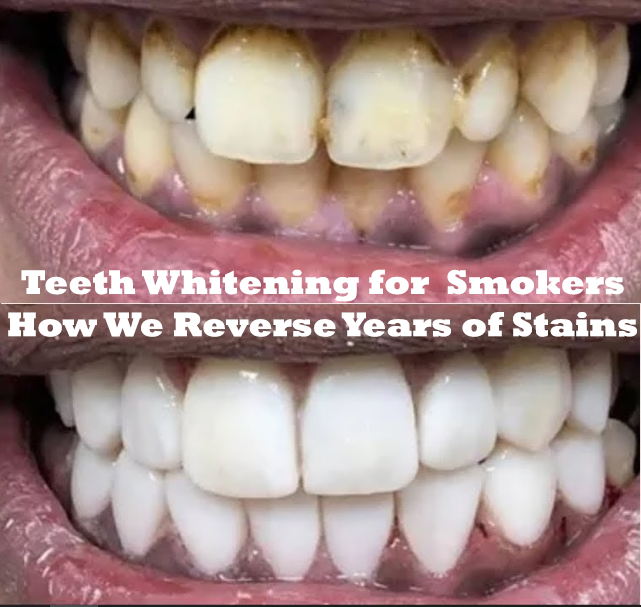Why does smoking stain teeth?
Smoking means that nicotine, tar, and mix of chemicals are all being introduced into your teeth. When nicotine mixes with oxygen, it turns into a yellowish substance that sticks to the porous enamel of your teeth. Tar is dark and it also sticks to the enamel but seeps into the microscopic holes found on enamel. Eventually, the pigments get deeper. After time accumulated through habitual use and get ingrained into the enamel, the stains will be hard to get rid of through brush removal alone.
The quickness and Severity of Staining
- Quick Onset: Within just a few months of smoking habitually, you can get moderate yellowing.
- Cumulative Effect: The longer you smoke and the more you do it, the more deep-set and intractable are the stains.
- Compounding Factors: stain can be increased by poor oral hygiene, coffee, tea and red wine.
The Broader Impact of Smoking on Oral Health
Beyond cosmetic stains, smoking increases the risk of:
- Gum disease and tooth loss
- Bad breath and dry mouth
- Slower healing after dental procedures
- Oral cancer
These issues can mess up whitening and make professional dental care essential for smokers.
Do whitening teeth treatment work with smokers?
What about sensitivity and safety?
Whitening of teeth is usually safe for smokers. Research indicates that the tooth sensitivity is equally in smokers and non smokers during the whitening process and the chances of any adverse effects are minimal when the protocols are adhered to. At Denta Sculpt, we will provide you with treatments according to your level of sensitivity and check your progress.
What Is the Duration of Whitening Effects on Smokers?
Initial results: Smokers and non-smokers will notice a great improvement when it is still fresh after whitening, in most cases within one week.
Maintenance: Depending on how well a person takes care of it, and how quickly they smoke, it can last several months.
Longevity Factors: The frequency of oral hygiene, diet and smoking all have a part in determining the length of time your smile will remain bright.
Tips for Smokers: Maintaining Your White Smile
- Stop or Cut Down Smoking
Quitting smoking is the best thing you can do to maintain your whitening investment. Even cutting down on the cigarettes will produce a visible different in the rate at which the stains come back.
- Maintain high standards of oral hygiene
At least, brush twice a day with a fluoride toothpaste .Use floss to clean between teeth every day. Rinse with an antibacterial mouthwash to decrease bacteria and neutralize bad breath
- Wash After Smoking
When you smoke, it is advisable to drink water or rinse your mouth to remove the residue before it settles to cause stains.
- Most Other Stain-Causing Foods and Drinks should be avoided
Coffee, tea, red wine, and dark sodas should all be limited. When you do have them, rinse or brush your teeth immediately.
- Make Appointments of Professional Cleaning
Regular visits to the dentist will clean the surface stains, this will keep your smile brighter and longer.
Conclusion:
Teeth whitening can make smokers in achieving a whiter more confident smile, but the results must be looked after with realistic expectations. The tar and nicotine amongst other chemicals contained in the smoke penetrate and stain the tooth enamel highly hence the teeth are more difficult to whiten at the first go and the process also takes a longer time than in people who are not smokers. Smokers also have a much greater chance of quickly relapsing even after a successful whitening procedure since the enamel is porous and it easily absorbs new stains caused by continuous tobacco consumption.
Research shows that, although smokers can also obtain good whitening results, the maintenance of the effect tends to be less lasting, usually less than six months to two years, as compared to non-smokers. With time, smokers or non-smokers can get some color rebound not necessarily due to external stains but due to natural occurrences of a change in tooth structure as we age.

